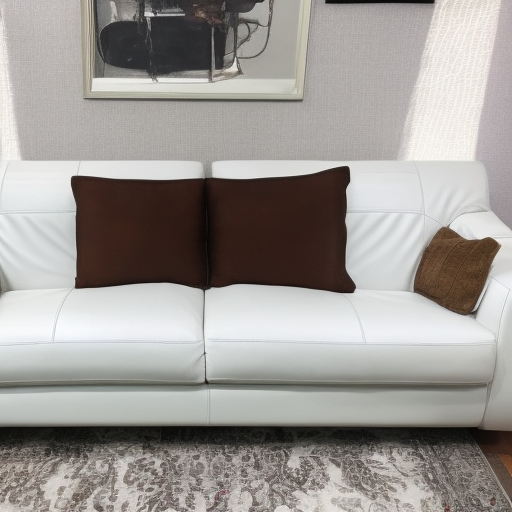Best way to dispose of leaves in the fall
You’ve just finished raking up all the leaves in your yard and you’re feeling pretty good about yourself. But then you realize you have no idea what to do with all of them! If you live in a city, you can’t just leave them out on the curb for the garbage collectors. And you can’t just burn them, because that’s probably illegal or dangerous. Don’t worry, we’ve got you covered! So what’s the best way to dispose of all those leaves?
The best way to dispose of fall leaves is to compost them
As the weather gets colder and the leaves start to fall, many of us are left wondering what to do with all of those leaves. Raking them up and disposing of them seems like such a waste, but what are the alternatives?
Composting leaves is a great way to get rid of them and give your garden a boost at the same time. Here’s how to do it:
Gather up your leaves and put them in a bin or pile
Rake your leaves and put them in a pile. At this point, you could decide to simple use them as a natural mulch in your garden. A thick pile of leave of an inch or more is a great way to add nutrients to the soil and help retain moisture. Leave mulch also helps to suppress weeds and to feed the good bacterias your soil has. They will eventually compost in place.
But, if you want to compost them first, make the pile not too thick because, you’ll want to shred them to help the process. While not mandatory, shredding leaves will definitely help you get a good compost quicker for next spring.
Shred the leaves if they are large
If you have large leaves, the best way to dispose of them is to shred them. You can do this with a lawn mower or a leaf shredder. Shredding the leaves will make them smaller and easier to compost.
A lawnmower will usually do the job pretty well. Put the bag on. If you don’t, you’ll need to rake again!
Add some green materials to the mix
When you add green materials to your compost pile, you’re helping to create a nutrient-rich environment that will encourage the growth of healthy plants. Leaves are a great source of carbon, which is an essential component of healthy compost. But, adding green materials to your compost will also help to increase the amount of nitrogen in the mix, creating a more balanced compost that will be ideal for your plants. Additionally, for a compost to start and heat to build up, green material is essential.
You do not need to be exact for the ratio of greens/browns. Browns are the leave in here and green could be vegetable scraps or your last lawn clippings of the year. Usually, it is recommended that you have more brown than green. A ratio 2/3 ratio should do.
Moisten the leaves with a bit of water
One of the main reasons why keeping your compost moist is important is because it helps to break down the leaves and other organic matter more quickly. When leaves and other organic matter are left to dry out, they can take much longer to break down. This can cause problems if you’re trying to compost a large amount of leaves at once. As such, it is very important to keep your compost moist at all time by adding water from time to time or exposing it to the rain.
Turn the pile every few days to aerate it and help the leaves break down
When you turn the leaves, it speeds up the process of decomposition. This is because it allows oxygen to reach all of the leaves, which helps them to break down quicker. In addition, turning the leaves helps to keep the leaves from getting too compacted, which can also slow down the process of decomposition.
After a few weeks, you should have some lovely compost to add to your garden in the spring
It can take anywhere from a few weeks to a few months to compost a pile of leaves, depending on the size of the pile and the composting method used.
The size of the pile and the composting method used are the two main factors influencing the time it will take to compost leaves. If you have a small pile, it will take less time to compost than if you have a large pile. Additionally, if you use a hot composting method, it will take less time than if you use a cold composting method.
Outside temperature, adjusting the amount of greens, turning it frequently and keeping it moist will also influence the time if will take to compost them.
What are the benefits of composting your leaves?
There are many benefits to composting your leaves. Let’s review them.
What if you don’t want to compost your leaves?
There are a few options available to you if you don’t want to do composting. While we believe that the best way to rake leaves and dispose of them is to compost them, there are other possibilities.
Depending on where you live, if your municipality has a leaf pick-up program, put them out on the curb on the designated day.
If you have a passive compost bin, you can add the leaves to that and let them sit.
If you don’t have a compost bin, you can always bag them up and take them to a local composting facility.
Another option is to shred the leave and let the shreds in place. It will feed your lawn, but don’t do that if you have an excessive amount of leave as it could kill it.
Shredded leave could also be used as is as mulch in your garden. This is a great way to add some extra nutrients to your soil and help your plants thrive.
Finally, if you’re into vermicomposting, leaves can become a great source of beddings for your worm bins.
Whatever you decide to do with your leaves, just make sure you don’t add them to your regular trash. They’ll just end up in a landfill, where they’ll take up space and release biogas into the environment.






